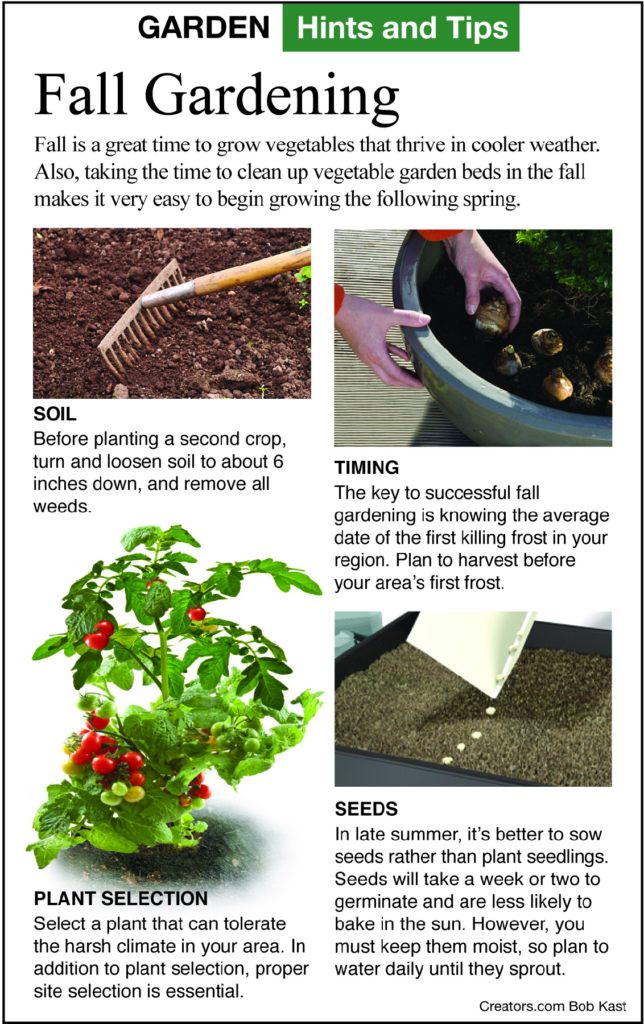Q: I think I remember you writing one time that a fall garden would be easier to take care of and that it should be planted in the middle of the summer. Am I right? What should I plant?
A: You are right. Planting a fall vegetable garden is a good idea, and now is the time to start planting it for many people around the country.
A fall vegetable garden is easier to take care of for several reasons. There is cooler weather, so it is easier to maintain watering. There are fewer weeds.
The cool-season crops get a longer cool season than when they are planted in the spring. If you are gardening in the Deep South or Southwest, fall is the time that the weather cools off enough to grow summer crops like tomatoes.
Most fall garden crops are started from seeds because garden centers don’t stock small vegetable plants for transplanting into the garden. Read the seed packet to see how many days it takes from planting to harvest. Be careful that you are reading whether the time to maturity is from planting seeds or from planting transplants into the garden until the harvest date.
If you are planting a warm-season crop, you will want to harvest the crop before the average first frost date. Cool-season crops don’t have that problem. In fact, some cool-season crops like Brussels sprouts taste better after being exposed to a frost.
You can plant potatoes in mid-July if you can find them. The Wood Prairie Family Farm still has potatoes available. They have a lot of certified organic varieties at WoodPrairie.com.
Start planting broccoli, Brussels sprouts, cabbage, and cauliflower indoors now to plant as small plants into the garden around the middle of August. By the end of July, plant in the garden seeds of beets, carrots, spinach, and short-season beans. By the middle of August, plant lettuce and radishes.
Q: My tomatoes have developed an odd problem. They look like they have been dropped, but of course, they are still on the vine. They have circular flat spots that are soft like a bruise. Some of the spots have black centers.
A: It sounds like they have a disease called anthracnose. It is a fungal disease that is found in the soil. It develops when spores get splashed onto the plant. The weather needs to be warm with temperatures over 80 degrees. The circular flat spots sink into the fruit and as the fungus grows, it eventually bursts from the center with black spores. The disease starts on the unripe fruit but is not noticed until the fruit is ripe and ready to harvest. Leaves can also be infected.
Prune off the infected fruit to stop them from infecting more fruit. They are still edible if you cut out the soft spots. Try not to splash soil onto the plants while watering or allow rainwater to splash them. Mulch around the plants to reduce the splashing. Use drip irrigation if possible. Install a trellis to raise the plants up from the ground if necessary.
Next year, use tomato varieties that say they are resistant to anthracnose. Next year, if you can, plant tomatoes, peppers, and eggplants in different areas of the garden.

Source: https://www.theepochtimes.com/fall-gardens-and-tomato-anthracnose_5407806.html